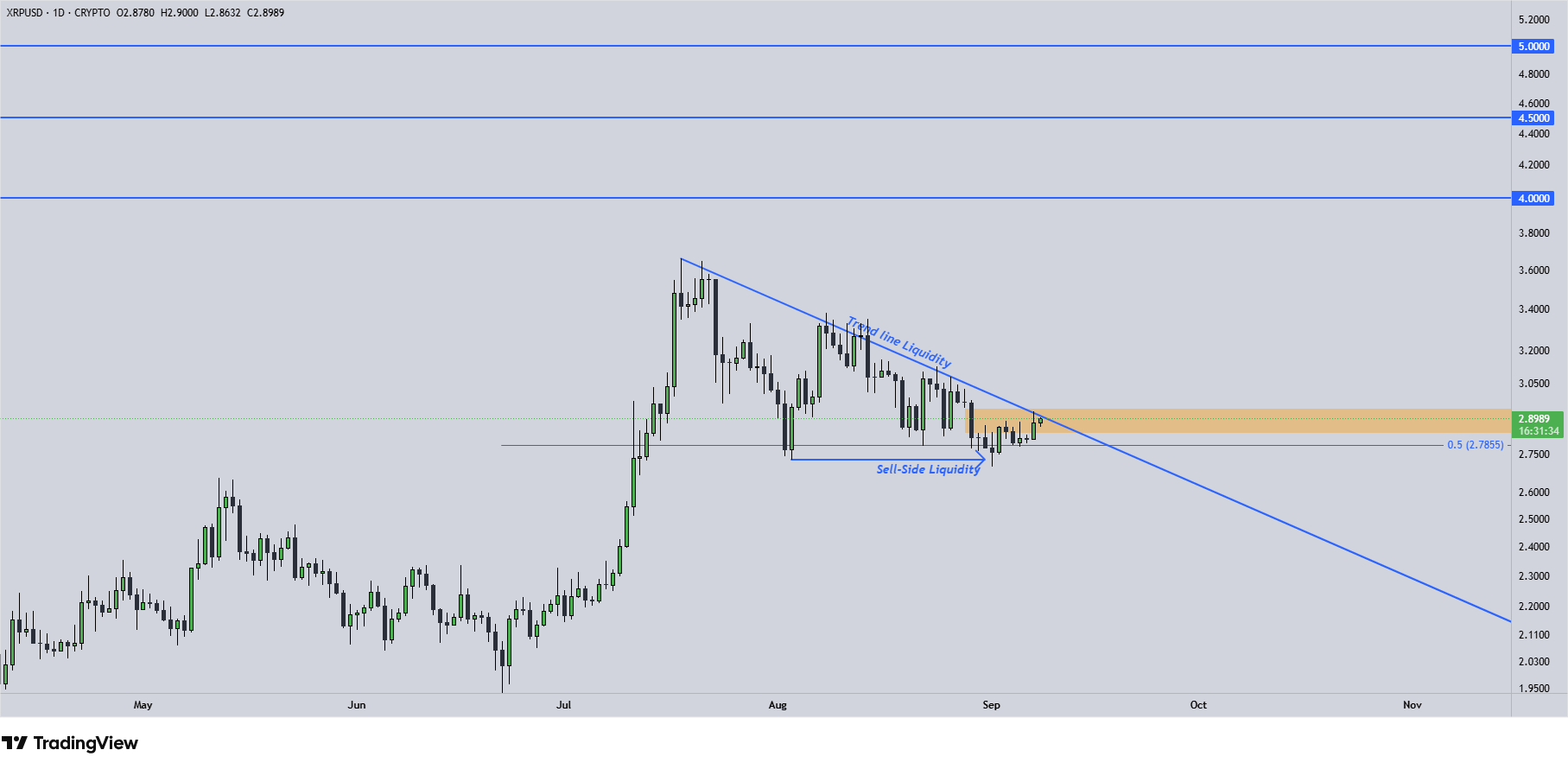Will XRP Reach New Highs in September?

A sound trading cryptocurrency strategy is typically built on several components — psychology, risk and money management, and the entry model itself. The entry model relies on technical parameters visible on the chart.
When assessing long-term effectiveness, some parameters demonstrate greater consistency than others. However, both “stronger” and “weaker” parameters can appear during price action, at times contradicting their perceived reliability. The challenge, then, is identifying when this occurs — and more importantly, determining how this knowledge can be used constructively.
It can often be more effective to rely on algorithmic parameters. These are defined using precise candlestick values, eliminating subjective interpretation that frequently undermines traditional methods. Before highlighting one such algorithmic parameter on Ripple’s chart, it is necessary to place it in the broader market context.
XRP technical analysis

XRPUSD - 1 Day Time Frame
In July, XRP experienced a sharp upward move, followed by a noticeably slower corrective decline. At the same time, a bearish trendline is visible on the chart. However, this trendline does not qualify as an algorithmic parameter, as it lacks measurable precision.
From a retail trading perspective, XRP might appear to be a sell when the price approaches this line. Yet, given that the current decline has unfolded in a corrective manner, the strength of bullish price delivery remains evident. Under such conditions, the possibility of a buy setup, guided by algorithmic entry criteria, may be considered.
XRP price target
On the chart, the initial sweep of Sell-Side Liquidity and a key resistance zone are highlighted. If the price closes above this zone on the daily timeframe, it could signal the potential continuation of the prior bullish impulsive move, with upside levels near the psychological marks of $4.0, $4.5, and $5.0. Until such a close occurs, however, the corrective structure is still considered intact.